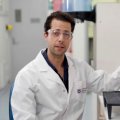New research from The University of Queensland has highlighted poor dental health as one of the most detrimental, but least understood, aspects of homelessness in Australia.
UQ’s School of Dentistry partnered with Mission Australia’s flagship homeless service Roma House to study the oral health of 58 homeless adults.
Lead researcher Dr Pauline Ford said results from the study found prevalence and severity of oral health problems among homeless people were at least three times greater than among the general public.
“Participants were younger, more likely to be Indigenous, smoked daily, and avoided dental care because of cost,” she said.
“While cost was an issue for participants, it’s clearly not the only barrier to seeking dental treatment among this group.
“Even when a free dental appointment was arranged for participants, only 34 of the 58 participants (59 per cent) attended.
“Our findings indicate that dental anxiety, having a generally chaotic life, mental illness and substance misuse are all barriers to the participants attending dental appointments.”
For those residents at Roma House who did attend appointments at the School of Dentistry’s free dental clinic, the impacts were profound.
Roma House Clinical Nurse Consultant Susan Cramb said the program had given many Roma House residents a new lease on life.
“It’s amazing what a difference a new set of teeth can have on someone’s life,” she said.
“Suddenly they have the confidence to smile, to hold their head up high and make changes in their lives, such as attending job interviews, seeking better housing arrangements and reconnecting with families, friends and their community.
“We have had residents who haven’t had a photograph taken of themselves smiling as they were so embarrassed by the condition of their teeth.
“We’re extremely grateful to the University for stepping in to fill this major gap in the Australian dental system for our clients at Roma House.
“Our partnership with The University of Queensland is making a real difference in the lives of Mission Australia’s homeless clients.”
Dr Ford said the project had also been hugely beneficial for the student dentists involved.
“University students involved in the clinics not only learn practical aspects of dentistry by providing free treatment for our clients, but they also learn about the challenges disadvantaged people in our community face, and the need for oral health promotion and referral pathways for dental care to be integrated within homeless support services,” she said.
Results from the study:
- The majority of participants had delayed or avoided visiting the dentist in the previous twelve months.
- The prevalence, extent and severity of oral health problems were all at least three times greater than among the general public, particularly when it came to physical, functional and social discomfort.
- Only 16 per cent reported visiting a dentist for preventive purposes (compared with 59 per cent for the general population)
- Two-thirds had delayed or avoided the dentist due to the cost, compared with one-third of the general population.
Thirty-four of the study participants underwent a dental exam.
- 91 per cent required restorative treatment – (eg. fillings, root canal treatment)
- 71 per cent needed treatment for gum disease (eg. removal of plaque and calculus)
- 62 per cent needed at least one tooth extracted
- 35 per cent required dentures to replace missing teeth
Media: Helen Burdon, Faculty of Health and Behavioural Sciences, 07 3365 7436 or h.burdon@uq.edu.au
.jpg)









